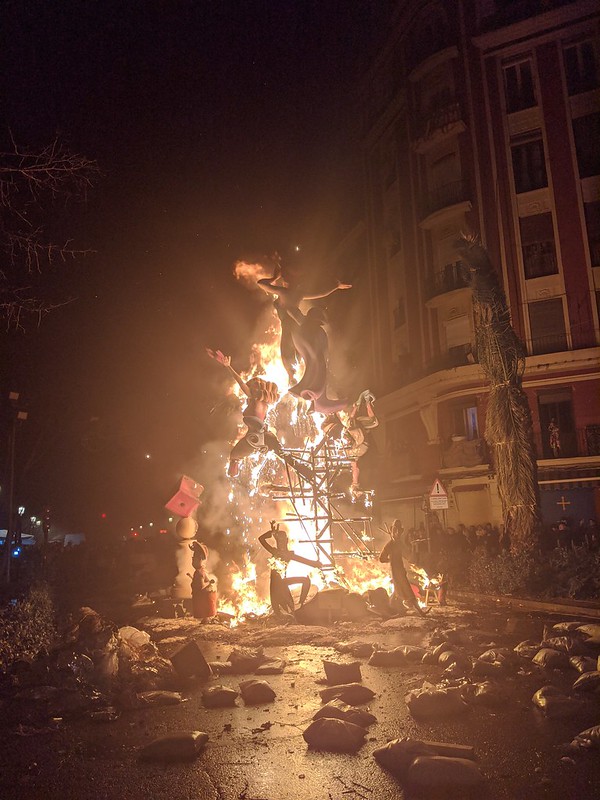Las Fallas De Valencia
By Claire L.
April 18, 2022
In Spain, they have a festival called Las Fallas, and although it exists in several Spanish cities, one of the most well-known ones is in Valencia. My friends and I decided to take a weekend trip up to visit and it was probably one of my favorite things I’ve done here. The festival is a full sensory experience, filled with noise, fire, parades and aspects of traditional Valencian society.
The celebration is for the Day of Saint Joseph, March 19, and started with carpenters who used to burn some of their materials on this day to celebrate the arrival of spring. Now the festival has progressed to include five days of festivities. It begins with the building of the fallas, which are huge structures made of wood or paper-mâché, on almost every corner of the street. A lot of them were satirical or created to comment on a certain aspect of society, but there were also ones with animals and movie characters.

At 2 p.m. every day, they set off a mascletá, which is a series of explosions of firecrackers for a complete pyrotechnic experience of noise, smoke and color. If you are standing fairly close, you can feel the vibration shake your body and the ground. Lots of other explosions are set off all throughout the day and night, but are mostly done for the auditory, rather than a visual aspect.
On Friday, in la plaza de la virgin, a flower offering is done for the virgin Mary, the patron virgin of Valencia. There is a beautiful monument built for her that is adorned completely with colorful flowers offered by each falla group. While this is going on, there is a procession of all of the falleras and falleros, the volunteers who help organize and put on the festival, dressed in traditional, elaborate hairstyles and dresses.
Each night leading up to the final night, the streets are packed with people, food and shops. The city really comes to life at night as the lights hung over the streets come on and fireworks are set off. Everywhere are people setting off firecrackers and sparklers and anything else that explodes.

Saturday is the main and final day of the festival. There are even more mascletás, a parade and at 8 p.m. they start burning the fallas. People gather in gigantic crowds to watch the fallas be burned. These are massive structures that create absolutely huge fires seen from streets away. The smallest children’s fallas are burned first, and as the night goes on they get bigger and bigger. There were lots of tears and visible emotions from the Valencian people as the fallas were burned and it was evident how meaningful this is to those who live there.
As I stood watching such a spectacular feat in front of me, it wasn’t hard to understand where the emotions were coming from. As a way to finish off the night, we stumbled into the front row of the final burning. This was unlike anything I had ever experienced before. It was so amazing to witness first-hand the culture and history of Spain and it is something I hope to seek out more opportunities like this in the future.
